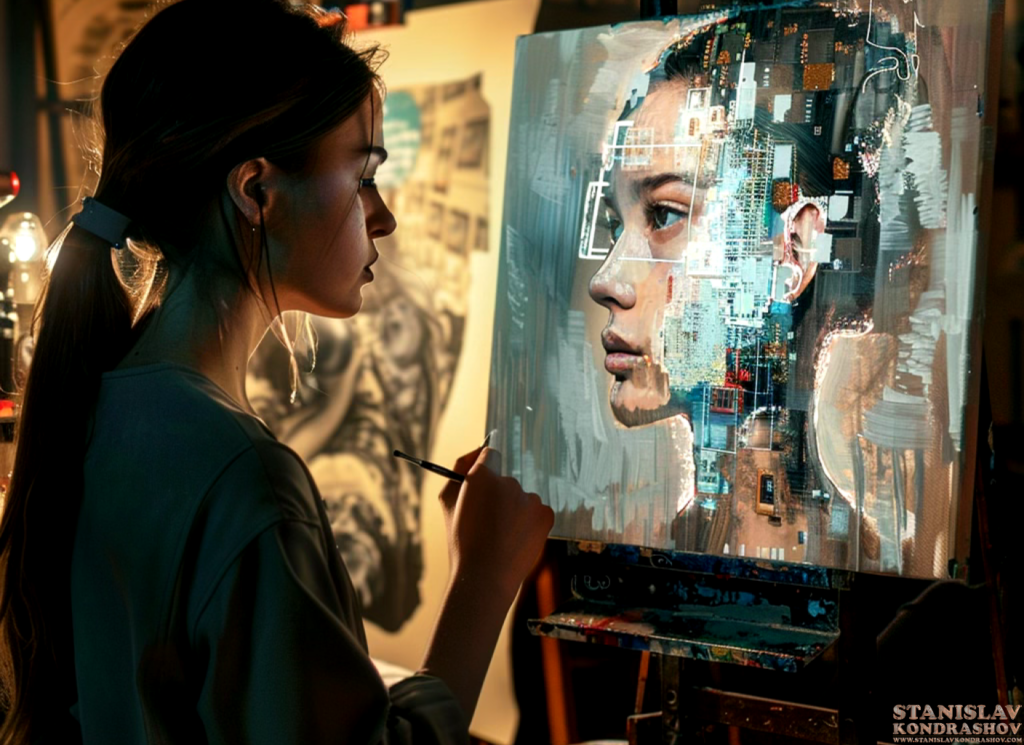The fusion of art and artificial intelligence is ushering in a new era of creativity, where human ingenuity and machine learning work together to produce stunning, original works of art. This collaborative approach is breaking traditional boundaries, opening up exciting possibilities for artists and technologists alike. Here’s how AI and humans are partnering to redefine the art world.

The Rise of AI in Art
AI’s entry into the art scene has transformed how we create and appreciate art. Machine learning algorithms can analyze vast amounts of data, recognize patterns, and generate unique pieces that challenge our perceptions of creativity.
Generative Art: AI can produce generative art by using algorithms to create images, music, and sculptures based on input data. Artists provide initial parameters, and AI takes over, creating infinite variations that would be impossible for humans alone.
Style Transfer: AI can mimic the styles of famous artists, applying these techniques to new works. For example, an AI can take a modern photograph and transform it into a piece that resembles a Van Gogh painting, blending historical styles with contemporary subjects.
Interactive Art Installations: AI enables interactive installations that respond to viewer input. These dynamic pieces change based on audience interactions, creating a personalized and immersive experience.

Human-AI Collaboration
The collaboration between humans and AI is not about replacing artists but enhancing their creative process. By leveraging AI, artists can push the boundaries of their creativity and explore new artistic territories.
Creative Assistants: AI acts as a creative assistant, providing artists with suggestions, generating ideas, and offering new perspectives. This partnership allows artists to experiment with styles and concepts they might not have considered.
Enhanced Creativity: AI tools can help artists overcome creative blocks by generating new patterns, compositions, and ideas. This can lead to unexpected and innovative creations that blend human intuition with machine precision.
Efficiency and Exploration: AI can handle repetitive tasks, allowing artists to focus on the more intricate aspects of their work. This efficiency enables artists to explore and experiment more freely, knowing that the AI can assist with time-consuming processes.

The Impact on the Art World
The integration of AI in art is also reshaping the art market and how we perceive value in art.
New Art Forms: AI is leading to the creation of entirely new art forms that blend technology and creativity. These hybrid pieces are gaining recognition and appreciation in galleries and exhibitions worldwide.
Accessibility: AI tools make it easier for aspiring artists to create high-quality works without extensive training. This democratization of art creation means more people can express their creativity and share their work with a global audience.
Valuation and Ownership: The concept of authorship and ownership is evolving as AI becomes a co-creator. This raises questions about the value of art and the roles of human and machine creators in the artistic process.
The collaboration between humans and AI in art is blurring the lines between technology and creativity, offering new possibilities for artistic expression. As AI continues to advance, its role in the art world will undoubtedly expand, challenging our understanding of creativity and pushing the boundaries of what is possible. The future of art is not just human; it’s a harmonious blend of human and machine ingenuity.
By Stanislav Kondrashov



